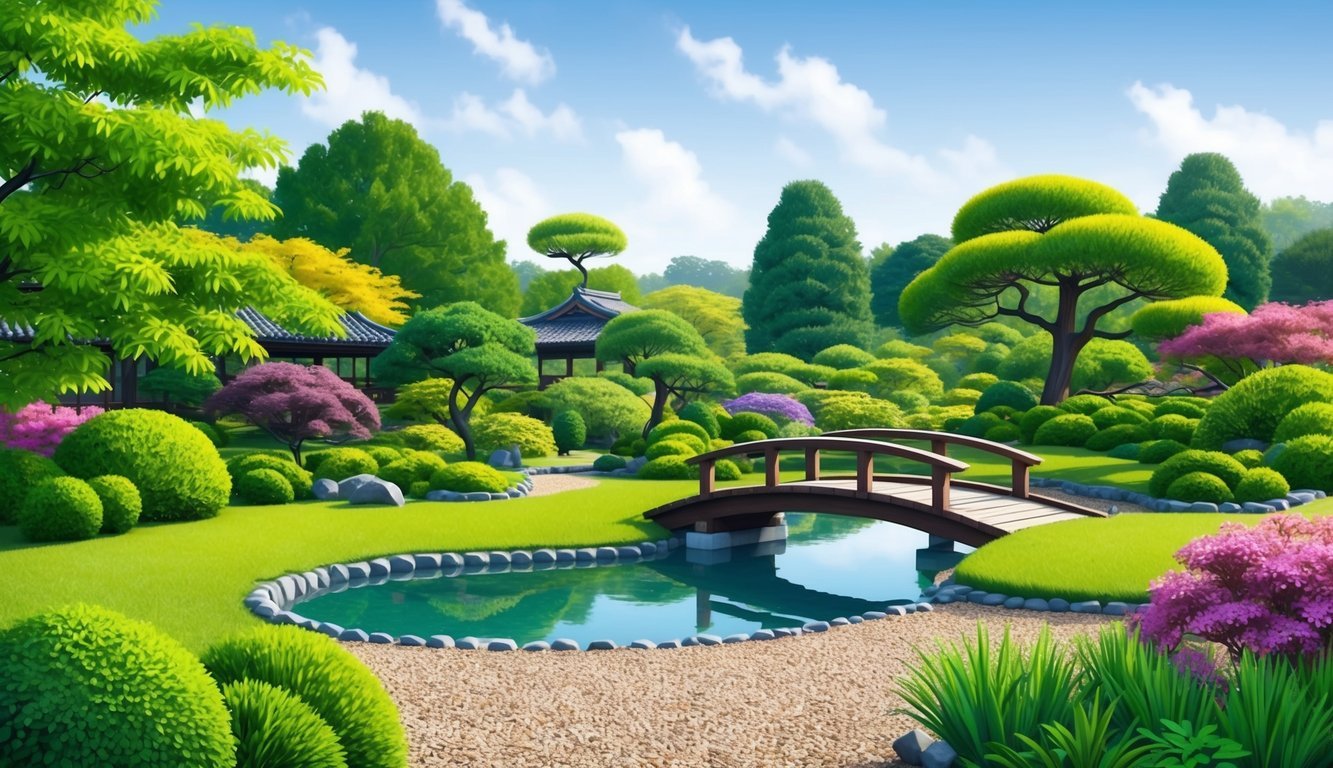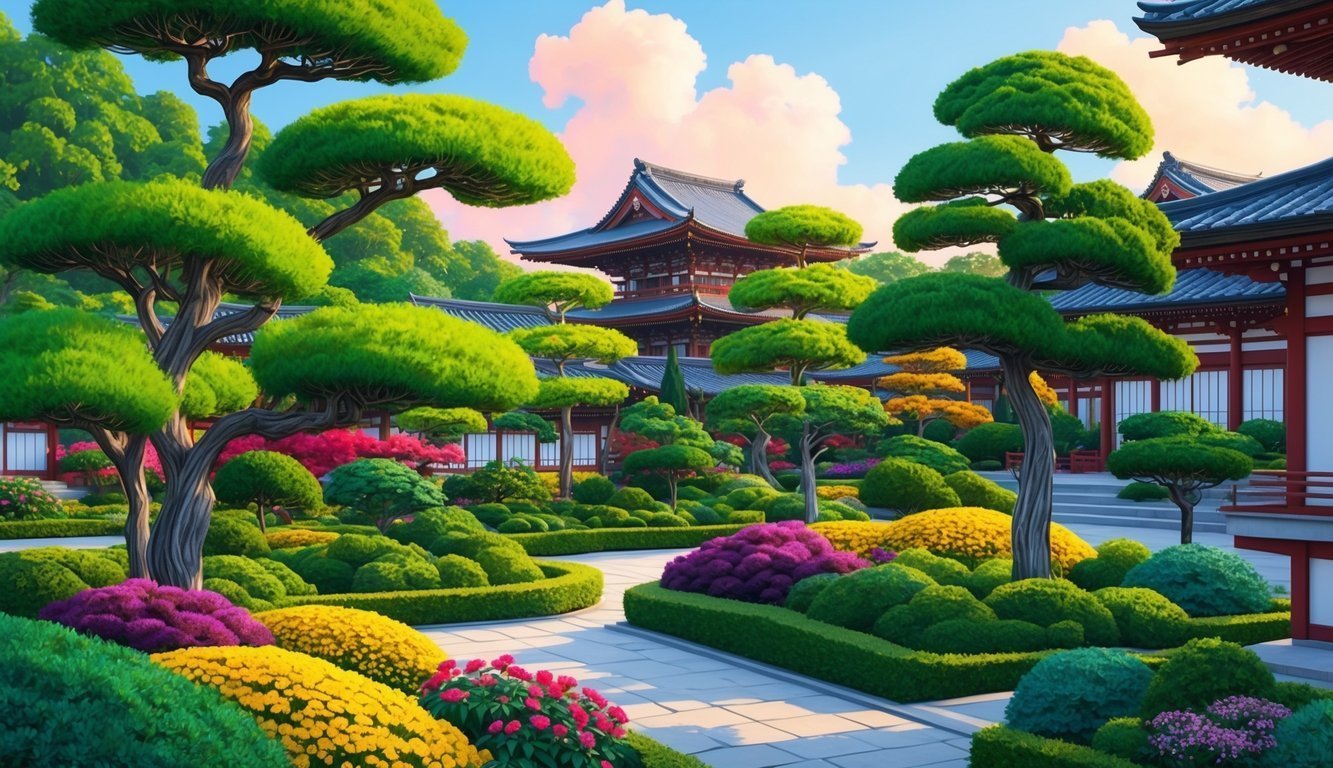Japan has some of the most beautiful and serene gardens in the world.
From vibrant flower fields to tranquil Zen landscapes, these gardens offer a perfect escape from the hustle and bustle of daily life. Exploring the best gardens in Japan allows you to experience the country’s unique blend of nature and culture.
Each garden has its own story and charm, showcasing traditional Japanese design and the changing seasons.
Whether you’re seeking peace, inspiration, or a stunning photo opportunity, the gardens of Japan are sure to leave a lasting impression.
Immerse yourself in the beauty of these spaces and discover what makes each one special.
Shofuso Japanese Cultural Center
Shofuso Japanese Cultural Center offers a unique glimpse into Japanese culture in Philadelphia.
The center features a stunning garden filled with serene elements, including a pond, waterfall, and koi fish.
It’s a lovely place to take a peaceful stroll and enjoy the art of Japanese landscape design.
The building itself was constructed in Japan using traditional techniques.
You’ll see elements that reflect authentic Japanese architecture, making it feel like a little piece of Japan in the U.S.
You can visit year-round, but it’s best to plan ahead for timed tickets, especially during busy seasons.
JASGP members enjoy extra perks like priority access, which can make your visit even smoother.
If you’re looking for a spot to relax and appreciate nature while learning about Japanese culture, Shofuso is a great choice.
Rating: 4.6 (1800 reviews)
Location: Shofuso Japanese Cultural Center
Contact: (215) 878-5097
Website: Visit Website
Cultural Significance of Japanese Gardens

Japanese gardens are more than just beautiful landscapes.
They hold deep meanings tied to history, spirituality, and aesthetics.
Understanding their cultural significance enhances your appreciation of these serene spaces.
Historical Overview
The roots of Japanese gardens trace back to ancient times, starting in the Asuka period (592-710).
Early gardens were influenced by Chinese designs, focusing on spirituality and nature.
As time passed, distinct styles developed, like rock gardens and tea gardens.
The Zen influence in the 14th century brought an emphasis on simplicity and mindfulness.
Gardens were often designed to reflect nature and were seen as a form of artistic expression, making them vital in Japanese culture.
They became popular spots for ceremonies and family gatherings, linking people to nature and tradition.
Influence on Modern Gardening
Today, Japanese gardens inspire gardeners worldwide.
Their focus on balance, natural materials, and seasonal changes is evident in many landscapes.
Elements like water features, stones, and carefully placed plants create a sense of quiet beauty.
In urban settings, you may find miniatures reflecting these traditional aspects, turning small spaces into peaceful retreats.
Concepts from Japanese gardening, such as the use of asymmetry and the integration of structures, are incorporated into modern designs.
This influence encourages a deeper connection between people and nature, promoting mindfulness and relaxation in our busy lives.
Unique Features of Japanese Gardens
Japanese gardens are known for their serene beauty and thoughtful design.
They blend natural elements and symbolic features to create spaces that encourage reflection and peace.
Here are some unique elements that set these gardens apart.
Use of Natural Elements
In Japanese gardens, nature takes center stage.
You’ll often see rocks, water, and plants used intentionally.
Each element has a purpose and contributes to the garden’s overall harmony.
Rocks symbolize mountains and are carefully placed to create balance.
Meanwhile, water represents life and reflects the sky and the surrounding landscape, enhancing the feeling of tranquility.
Plants are chosen for their beauty and seasonal changes.
Cherry blossoms and maples showcase vibrant colors in spring and fall.
This connection to nature allows you to appreciate the beauty around you throughout the year.
Symbolism and Design
Design in Japanese gardens focuses heavily on symbolism.
Each feature represents deeper meanings linked to nature and spirituality.
For example, the layout often imitates natural landscapes, like mountains and rivers.
Pathways meander rather than follow straight lines, creating a sense of wandering through nature.
Additionally, elements such as lanterns and bridges hold particular significance.
Lanterns symbolize light and welcome, while bridges connect different parts of the garden, symbolizing a journey or transition.
These thoughtful details not only beautify the space but also invite you to explore and reflect on their meanings as you walk through the garden.
Frequently Asked Questions

When planning your visit to Japan, you might have some questions about its beautiful gardens.
Here’s a quick guide to help you find the best spots for enjoying nature and culture during your trip.
What are some must-see gardens when visiting Japan?
Some of the must-see gardens include Kenrokuen in Kanazawa and Ryoanji in Kyoto.
Each offers unique landscapes and historical significance.
Shofuso Japanese Cultural Center in Philadelphia also replicates traditional Japanese garden aesthetics for those who can’t travel far.
Can you list some famous Japanese gardens that shouldn’t be missed?
Yes, gardens like Kenrokuen, Ryoanji, and Kinkaku-ji are famous for their stunning designs and history.
These gardens showcase elements like ponds, rocks, and seasonal flowers, giving you a true taste of Japanese landscaping.
Which gardens in Tokyo offer the best traditional Japanese experience?
In Tokyo, Rikugien and Shinjuku Gyoen are two great choices.
Rikugien features beautiful walking paths and a pond, while Shinjuku Gyoen blends traditional Japanese gardens with Western-style landscapes.
What are the top-rated traditional gardens in Kyoto?
Kyoto is home to many top-rated gardens.
Ryoanji, with its famous rock garden, and the lush surroundings of Nanzenji are great picks.
Each of these spaces offers a peaceful escape from the city’s hustle.
Where can I find a serene rock garden in Japan?
For serene rock gardens, Ryoanji is the most well-known, featuring a simple yet profound layout.
You might also explore smaller gardens at temples, which often have beautiful rock arrangements.
What are the hidden gems among Japan’s many gardens?
Yoshikien Garden in Nara is a hidden gem.
It showcases traditional styles and offers a quieter experience away from tourist crowds.
Exploring gardens like this can lead to serene moments with nature.


